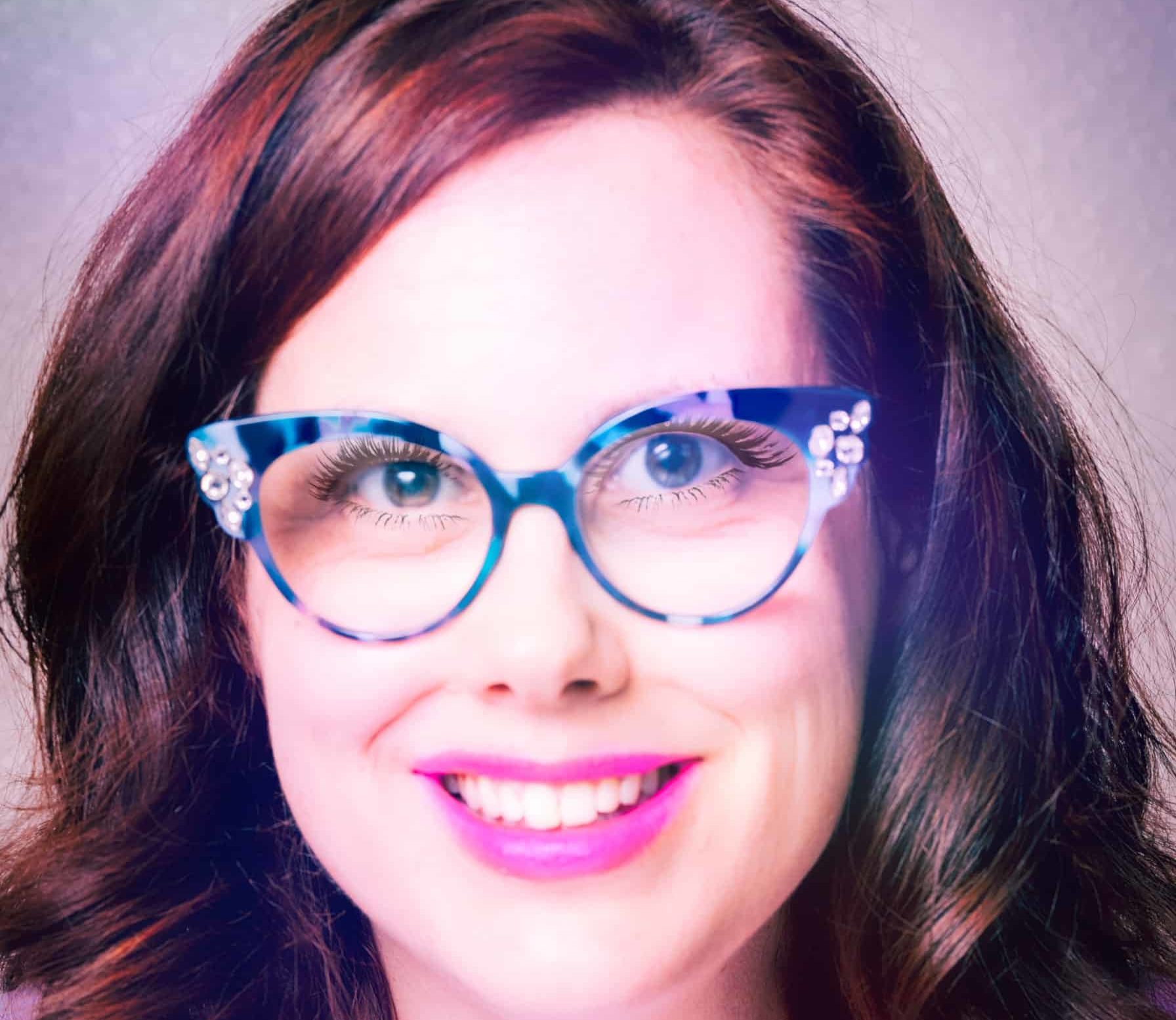A 2009 head-on car collision on a California freeway left Sarah Bokeh of San Jose with multiple injuries, including blurry eyesight and “migraines so painful I could not stop screaming.” But a book written by a brain-injured professor and several pairs of therapeutic eyeglasses prescribed by the Mind-Eye Institute did something she never imagined possible: put her on a return path to normalcy.
“I was just a shell of myself when I picked up Dr. Elliott’s book about six or seven years after the car crash. I had heard about it from a concussion support group on Facebook,” Sarah says, referring to The Ghost in My Brain, authored by DePaul University (Chicago) professor, Clark Elliott Ph.D. In the book, Dr. Elliott chronicles and credits his comeback from eight years of debilitating brain-injury symptoms to the efforts of cognitive restructuring specialist, Donalee Markus PhD, of Designs for Strong Minds in Highland Park, Ill., and optometrist, Deborah Zelinsky OD, founder and research director of the Mind-Eye Institute in Northbrook, Ill.
“Considering my symptoms, though, travel from California to the Chicago area was out of the question at the time I got the book,” recalls Sarah, who is now in her 40s and worked as a mobile phone store manager until shortly after the car mishap. Scheduling any kind of appointment at the Mind-Eye Institute had to be relegated to the proverbial back burner.
The crash, which was caused by a wrong-way driver and severely injured Sarah “from head to foot,” proved the capstone of what Sarah says had been literally hundreds of prior concussions sustained during her lifetime. “They were concussions that had left me with memory problems and other symptoms, which were not readily apparent at the time because doctors did not recognize and treat them, and I was able to overcompensate for them.”
But her car collision brought everything, overwhelmingly, to the fore. “The accident left me with post-traumatic stress syndrome and a horrible memory. I went from being able to handle six tasks at once to struggling with just one. I could not remember anything.”
Someone who had once enjoyed photography and music as hobbies, Sarah now had problems reading and comprehending, in addition to suffering from light and sound sensitivity. “I would go to work wearing sunglasses and was unable to listen to a song for longer than a minute or so. I could not keep track of words on a page and had to keep re-reading lines because I was unable to remember what I had just read.” Her unrelenting headaches also kept her in bed much of the time.
Sarah’s situation began improving gradually, although symptoms persisted. She experienced some relief from a cervical osteopath in California and underwent several cognitive behavioral therapy sessions with professionals of a Utah-based concussion treatment center – Cognitive FX. “It was the team at Cognitive FX who discovered vision was my main problem and was driving all my other issues,” she says.
The information helped confirm the decision Sarah had already made at that point to travel to Mind-Eye, which she did in June 2020.
At Mind-Eye, she underwent comprehensive testing of her visual processing capabilities at the Institute, before being prescribed highly individualized syntonic filters and “brain” glasses — Brainwear™.
“Brain” glasses help resynchronize a head-injured patient’s sensory signaling pathways, especially eyes and ears, by varying the angle, intensity, and amount of light passing through the retina, according to Sarah’s Mind-Eye optometrists Carla Adams OD and Dan Myers OD. They add that disruption of sensory integration affects visual processing and leads to symptoms such as Sarah’s.
“Visual processing is what enables us to respond appropriately to changes in our surrounding environment,” Dr. Zelinsky explains. “By using ‘brain’ glasses to manipulate the way light disperses across the retina, we can literally develop new informational signaling pathways in the brain. These new pathways circumvent damaged ‘communication’ lines and re-establish more normal signaling patterns between the retina and deeper brain processing. The retina is composed of brain tissue and serves as a conduit between the outside environment and internal systems.”
Now wearing her sixth pair of Mind-Eye glasses, Sarah says her comprehension and memory are “much better. In fact, I actually remember more now than I forget,” she laughs. Her migraines and light and sound sensitivity also have decreased, “although I still wear earplugs,” and she says she is feeling more relaxed – less jumpy. “I am not getting startled by every little thing. And I no longer feel the need to take unnecessary actions – like looking the wrong way down a one-way street.”
She calls the work of the Mind-Eye team “amazing,” especially when comparing the Institute’s care to her past experiences with the standard health system. “Basically, I was prescribed pain medications for my headaches, and the meds did not work. When I said they were not working, I was told I was just making it up, because I seemed normal to others. But they couldn’t see the struggling going on inside me.
“I was initially skeptical when I contacted Mind-Eye. I had already spent so much time and money on supposed solutions, which hardly did anything for me,” Sarah says.
But that is the past, and Sarah is now focused on the future. She credits the synergy between both programs – the Mind-Eye and its “brain” glasses and the cognitive behavioral therapy offered through Cognitive FX – for her ongoing recovery.
“One positive aspect of being confined to bed during my stretch of migraines is that I was able to spend the time watching videos on photography and photographic techniques. Today, I am working part-time as a photographer and selling fine-art photos online.”
She adds, “I would recommend the Mind-Eye to anyone who has suffered a concussion – or many concussions — and experiences all the related symptoms. The team there knows how to figure out what’s wrong.”

